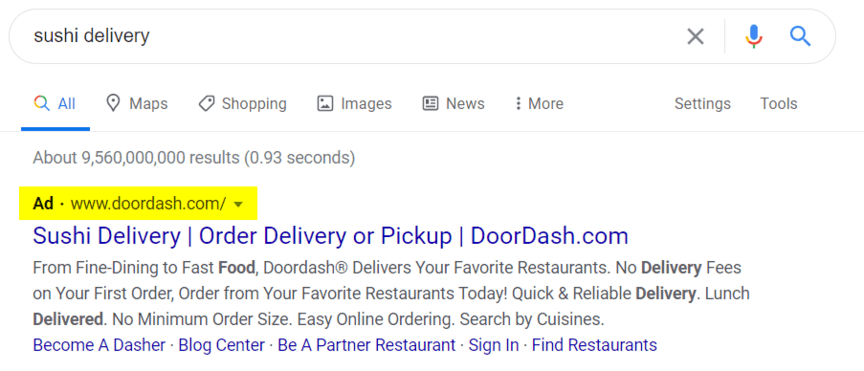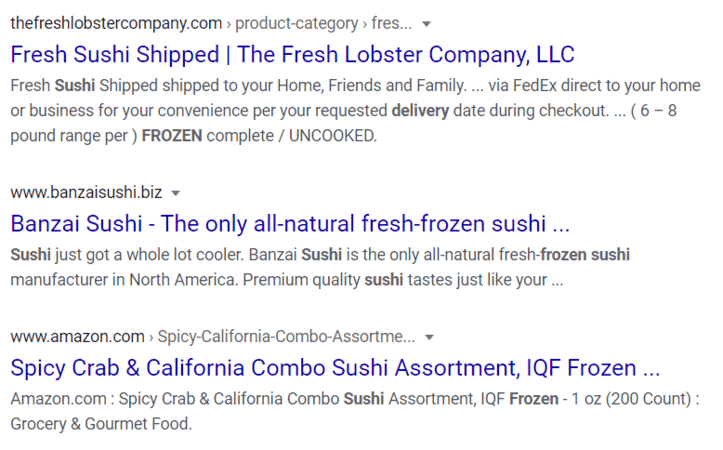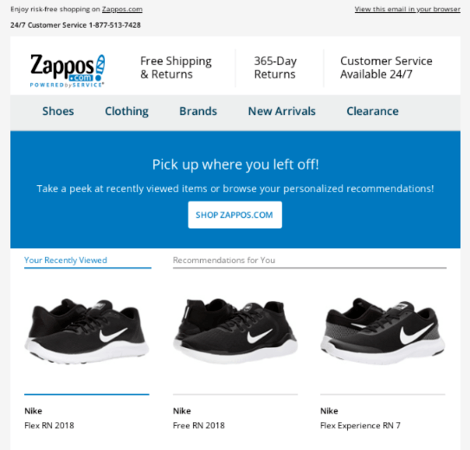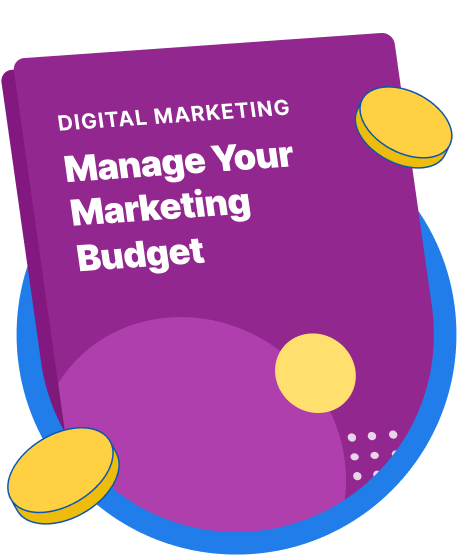-
 10 min. read
10 min. read
-
 Trevin Shirey
Trevin Shirey VP of Marketing
VP of Marketing
- Trevin serves as the VP of Marketing at WebFX. He has worked on over 450 marketing campaigns and has been building websites for over 25 years. His work has been featured by Search Engine Land, USA Today, Fast Company and Inc.
As a marketer, you have a variety of options at your disposal for reaching new customers. But with everything from billboards to event sponsorship to social media campaigns, it can be difficult to determine which ones are worthy of your marketing dollars.
For your business, it’s important to focus on the channels most likely to produce a high return on investment (ROI). You want a channel that will deliver results and revenue this year and next.
Which marketing channels produce the highest ROI, though? When it comes to the highest ROI marketing channels, digital dominates. Channels like search, paid, and email provides access to the best marketing strategies for ROI.
If you’re a results-driven marketer, focus on tactics within these channels because they can deliver short- and long-term revenue. Keep reading to learn more about the top channels and tactics for ROI! P.S. Get insider tips, tricks, and advice for maximizing your marketing ROI by joining Revenue Weekly.
Are You Spending Your Marketing Budget Wisely?
Download our guide to learn how to plan your budget, set goals, track performance, and more!
Get My Free Guide
Which marketing channels produce the highest ROI?
The marketing channels that produce the highest ROI are search, paid, and email.
These digital or online channels include strategies like email marketing, search engine optimization (SEO), and pay-per-click (PPC) advertising.
3 highest ROI marketing channels
The three highest ROI marketing channels, or the channels that tend to deliver the best ROI, include:
1. PPC
Learn more about why PPC is one of the best marketing strategies for ROI:
What is PPC?
If you like lots of concrete data on your marketing strategies, PPC advertising can quickly become your favorite way to reach new customers. This paid strategy operates on a pay-per-click model, which means your business pays every time someone clicks on your ad.  With tools like Google Ads, you can research each of your potential keywords, select the most effective ones, and determine exactly how much you’re willing to pay for each click.
With tools like Google Ads, you can research each of your potential keywords, select the most effective ones, and determine exactly how much you’re willing to pay for each click.
Plus, you can take advantage of ads that use machine learning, like responsive ads, to maximize your ROI. From there, you can integrate your Google Ads account with your Google Analytics account and look at what site visitors do after clicking them. And if you’ve already set up goals, it’s easy to see how your PPC ads are helping you reach them.
Why is PPC one of the highest ROI marketing channels?
PPC is one of the highest ROI marketing channels because it targets bottom-of-the-funnel users or users ready to make a purchase.
The fact that PPC can use advanced targeting options like location, interests, and device makes it even more effective for generating an impressive ROI. Generally, companies who use PPC advertising see an average return of $2 for every $1 spent. Use Google Ads, however, and your business will likely experience even higher returns.
The average ROI for Google Ads is $8 for every $1 spent.
Learn How to Increase Marketing ROI
How do you calculate PPC’s ROI?
You can calculate PPC’s ROI with the following formula:
(Gain from Investment – Cost of Investment) / Cost of Investment
For example, let’s say your primary goal is to sell a specific product that costs $100, and you run a PPC campaign with a cost per click (CPC) of $1.00. Fifty people click the ad, and two of them make a purchase.
(Gain from Investment – Cost of Investment) / Cost of Investment
($200 – $50) / $50
$150 / $50
3 * 100
300%
In this case, your ROI would be 300%. Of course, this just a hypothetical example, and the ROI your company sees from PPC depends on the quality of your campaigns. But being able to quickly and easily calculate your ROI allows you to scale up on the campaigns that are working and improve upon the ones that aren’t.
2. SEO
Learn more about why SEO is one of the highest ROI digital marketing channels:
What is SEO?
Another Internet marketing strategy that offers a wealth of analytical information is SEO. From basic metrics like traffic and bounce rate to more complex ones like users flow, you have access to virtually every piece of information you could want when it comes to your strategy.  SEO works to improve your website’s placement in search results by optimizing your site for search engines and users.
SEO works to improve your website’s placement in search results by optimizing your site for search engines and users.
These optimizations focus on creating stellar user experiences and helpful content. By ranking higher in search results, your website can earn more traffic, leads, and sales.
Why is SEO one of the highest ROI marketing channels?
When it comes to which marketing channels produce the best ROI, SEO dominates. It’s a long-term strategy built for driving long-term revenue.
Unlike PPC, you don’t pay when people click on your site, which helps SEO provide an impressive ROI. SEO also works well for generating ROI because it focuses on every stage in the buying funnel, from top-of-the-funnel to bottom-of-the-funnel users. With SEO, you can reach more of your target audience and nurture them into becoming customers.
The fact that organic traffic, which SEO generates, captures more than 40% of revenue demonstrates the power of this digital marketing strategy. It’s a tactic that companies can’t ignore, especially if they’re looking to set themselves up for long-term success.
How do you calculate SEO’s ROI?
You can calculate SEO’s ROI by using the following formula:
(Gain from Investment – Cost of Investment) / Cost of Investment
Let’s say your site generates 20 sales per month from organic traffic, with each sale worth $200, leading to a total of $4000. You’ve also invested in professional SEO services and dedicated around $1500 per month for those services.
(Gain from Investment – Cost of Investment) / Cost of Investment
($4000 – $1500) / $1500
$2500 / $1500
1.66 * 100
166%
In this case, your ROI would be 166%. Even if your business operates on a business-to-business (B2B) model or focuses on lead generation, it’s still possible to measure ROI if you know how much each of your leads is worth. By setting up goals in Google Analytics for form submissions, quote requests, and free trials and assigning the monetary value, you’ll be able to see how much revenue your SEO strategy is generating for your company – even if it’s a rough estimate.
An ROI-tracking software, like MarketingCloudFX, can help your business track and measure your SEO ROI even faster. This proprietary software provides your company with a convenient dashboard that gives instant insight into your overall marketing strategy’s ROI and the ROI of specific tactics, like SEO.
3. Email marketing
Learn more about why email marketing is one of the best strategies for ROI:
What is email marketing?
Email marketing focuses on lead generation and lead nurturing.  Through a range of email campaigns, as well as audience segments, your business can take leads from awareness to purchase. You can also use email marketing to build customer loyalty and retention, which translates to big wins.
Through a range of email campaigns, as well as audience segments, your business can take leads from awareness to purchase. You can also use email marketing to build customer loyalty and retention, which translates to big wins.
Why is email marketing one of the highest ROI marketing channels?
With an average ROI of $44 for every $1 spent, email marketing is renowned for its ability to generate an ROI. Email marketing serves as one of the highest ROI marketing channels because of its ability to personalize itself to a user and their wants, questions, and needs.
You can use email, for example, to suggest similar products or remind shoppers about an empty shopping cart. Email can also serve as an educational tool, keeping readers up-to-date about an industry and its processes, regulations, and more. The fact that companies across industries, from manufacturing to ecommerce, can use email marketing makes it one of the best strategies for ROI.
It’s a universal tactic for generating not only revenue but also limiting customer churn.
How do you calculate email marketing’s ROI?
You can calculate email marketing’s ROI by using the following formula:
(Gain from Investment – Cost of Investment) / Cost of Investment
Imagine your business uses email marketing to nurture leads. In the past quarter, you’ve invested around $500 to build, design, and send your emails. In response, you’ve earned three leads, which are worth $1500.
(Gain from Investment – Cost of Investment) / Cost of Investment
($1500 – $500) / $500
$1000 / $500
2 * 100
200%
In this case, your ROI would be 200%.
Similar to PPC and SEO, you can also look at the value of your email marketing in Google Analytics. Just select “Email” as your channel, look at the value of your goal completions, and compare this to your monthly spend on email marketing. Depending on whether you use an email platform or hire writers to create email content, your email cost could range from free to a few thousand a month.
With tools like EmailMarketingFX, you can view metrics like opens, clickthroughs, and unsubscribes to improve your strategy and drive ROI improvements.
Why aren’t traditional channels some of the highest ROI marketing channels?
With traditional marketing campaigns, your business reaches the audience you pay to reach — no more, no less. Whether that’s the viewers of a certain TV show, the readers of a certain newspaper or the residents of a certain address, the positioning of your ad determines who will see it. Unfortunately, reaching wide audiences typically comes with a steep price.
And even if your business can afford them, it’s difficult to determine whether the ads you place on traditional channels are worth the investment since you can’t directly track the returns. For example, let’s say you’re responsible for marketing an insurance agency and you choose to run a television ad. Your first cost will be production.
The exact cost depends on your budget, the complexity of the ad, and the agency you choose to work with (assuming you don’t have an in-house video production team). The average cost is $342,000 per 30 seconds of the commercial. Then, you’ll have to decide when and where to air your ad.
The price depends on the reach of the networks you choose, as well as the time slot of your ad. The average 30-second spot on NBC, for perspective, costs around $425,000. Of course, this number comes from days with standard programming — not events like the Super Bowl, which cost advertisers $5.6 million per 30-second spot. After all is said and done, it’s safe to say that ads on traditional networks will get your company in front of consumers’ eyes. But do these kinds of commercials really pay off?
The truth is, it’s nearly impossible to say for sure. Unless you ask every single customer where they first heard about you, what other marketing messages they saw that influenced their decision, and what ultimately convinced them to contact you, you’ll never know. This goes for ads on television, in magazines, on the radio, and even through direct mail like brochures and postcards, meaning that if you rely on traditional methods to attract customers, your budget allocation is nothing more than a best guess.
Are You Spending Your Marketing Budget Wisely?
Download our guide to learn how to plan your budget, set goals, track performance, and more!
Get My Free Guide
Leverage the best marketing strategies for ROI today
If you want to reach customers in a more cost-effective way (and know for a fact what your budget is accomplishing), Internet marketing is your best bet.
Whether you use SEO, PPC, email marketing, or another online channel, digital marketing offers the best ROI when it comes to marketing a business. Learn more about using the best marketing strategies for ROI with Revenue Weekly!
-
 Trevin serves as the VP of Marketing at WebFX. He has worked on over 450 marketing campaigns and has been building websites for over 25 years. His work has been featured by Search Engine Land, USA Today, Fast Company and Inc.
Trevin serves as the VP of Marketing at WebFX. He has worked on over 450 marketing campaigns and has been building websites for over 25 years. His work has been featured by Search Engine Land, USA Today, Fast Company and Inc. -

WebFX is a full-service marketing agency with 1,100+ client reviews and a 4.9-star rating on Clutch! Find out how our expert team and revenue-accelerating tech can drive results for you! Learn more
Try our free Marketing Calculator
Craft a tailored online marketing strategy! Utilize our free Internet marketing calculator for a custom plan based on your location, reach, timeframe, and budget.
Plan Your Marketing Budget

Maximize Your Marketing ROI
Claim your free eBook packed with proven strategies to boost your marketing efforts.
Get the GuideTry our free Marketing Calculator
Craft a tailored online marketing strategy! Utilize our free Internet marketing calculator for a custom plan based on your location, reach, timeframe, and budget.
Plan Your Marketing Budget






